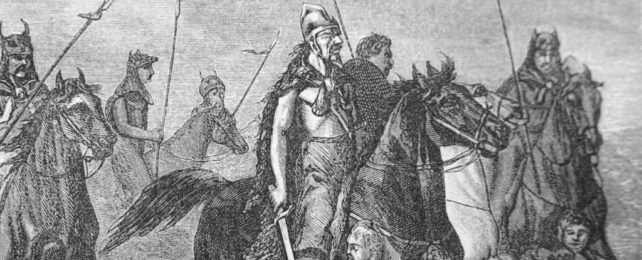It seems the Huns may not have been the cut-throat barbarians who had an "infinite thirst for gold", as suggested by some classical historians.
A new study reconstructing climate data from tree rings suggests these semi-nomadic people were compelled to raid and invade the eastern Roman provinces because of sheer hunger.
According to the natural archive recorded in the growth lines of oak trees from the Czech Republic and Bavaria, the early fifth century on the Great Hungarian plain was marked by a series of very dry summers.
Between the years 420 and 450 CE, people living on the Eurasian steppes would have experienced a tumultuous climate, archaeologists from the University of Cambridge say.
Times of drought would have forced Hun communities to switch back and forth between farming in a fixed spot and herding animals to lusher pastures.
Indeed, the teeth of ancient human remains found on the Great Hungarian steppes suggest the Huns experienced several changes of diets within their lifetimes. They seem to have quickly adapted to whatever food sources were most available. And this, in turn, might have triggered a shift in societal roles.
"If resource scarcity became too extreme, settled populations may have been forced to move, diversify their subsistence practices, and switch between farming and mobile animal herding," explains archaeologist Susanne Hakenbeck.
"These could have been important insurance strategies during a climatic downturn."
Attila the Hun, who came to power in the 430s, is often blamed for triggering the worst of the warfare. During his reign, Roman historians say the Hun leader made increasing demands for their gold and land with regular raids on their city-states.
But while Attila is often framed as a greedy leader, hell-bent on sucking the Roman empire dry, it's important to note that his attacks on the eastern frontier occurred during a time of increasing aridity in the Carpathian Basin.
Initially, relationships between the Huns and Romans were mutually beneficial, but their collaborations broke down in the 440s. In years of drought, when grazing land was scarce, experts think Hun herders might have been forced to become Hun harassers.
This ragtag bunch would have probably raided the livestock of their neighbors, relying on a warlord or warrior king to bring them together and negotiate monetary demands.
"If the dating of these events is reliable, then the most devastating Hunnic incursions, in 447, 451, and 452 CE, happened during extremely dry summers," researchers from Cambridge write.
"This raises the question of whether altered environmental affordances provoked adaptations to subsistence, economy, and perhaps even social organization."
Concrete archaeological evidence is needed to actually confirm this hypothesis, but the timing is suspicious and worth investigating further. If the authors are right, Attila's violence towards the Roman empire may have been a last-ditch attempt to keep his own people alive.
Roman records from this time note, for instance, that Attila once demanded a strip of land from the empire along the Danube river. While this could be interpreted as an act of violent avarice, floodplains are also great places for sheep, camels, or horses to graze.
Rather than attacking Roman provinces primarily for gold, researchers suspect Attila's raids were made to acquire food and livestock during times of drought.
Under his reign, the Huns successfully invaded Gaul and northern Italy, ultimately capturing the city of Milan. The sudden death of Attila in the year 453, however, led to a fight for power among his sons. The very next year, the Huns were defeated for good.
As always, history was written by the victors. Largely due to Roman descriptions, the Huns became known as ugly and angry people, who were unnecessarily violent and greedy.
While the study agrees that some of these ancient people did change their social and political organization to focus on at times violent raiding, the new findings reveal this was likely instigated as a matter of survival for them.
That negative image still exists to this day. Yet, in many ways, tree rings are a more objective record than human ones, and these natural lines are now helping researchers better understand the story of the Huns.
"Climate alters what environments can provide and this can lead people to make decisions that affect their economy, and their social and political organization," Hakenbeck says.
"Such decisions are not straightforwardly rational, nor are their consequences necessarily successful in the long term.
"This example from history shows that people respond to climate stress in complex and unpredictable ways, and that short-term solutions can have negative consequences in the long term."
The study was published in the Journal of Roman Archaeology.
